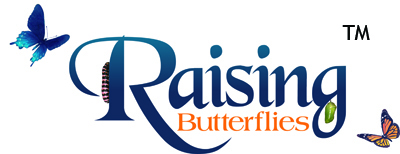Euphilotes spaldingi spaldingi

Photo Life History: Euphilotes spaldingi spaldingi
Habitat: Mountain Canyons; Mountain Hillsides
Host Plants: Eriogonum racemosum
Suitable Lab Host Plants:
How to Find Female Butterflies: Females are usually found in association with its host plant either ovipositing, basking, or nectaring.
How to Care for Live Female Butterflies: Click here.
Methods of Female Oviposition: Twin Cup Method.
How to Find Eggs: Look on Flower Stems
How to Hatch Eggs: Keep egg on original stem or flower petal. If you remove attached eggs from flower petals, or detach the egg/petals from flower itself, you reduce the odds that the egg will hatch in the lab.
How to Find Caterpillars in the Field: Look for Ants Tending Caterpillars. Spotting ants tending lycaenid larvae on buckwheat blooms can be much easier that spotting caterpillars both because of larval camouflage on the host Eriogonum coupled with the dark coloration and speedy motion of ants. (See this video.) Finding eggs and smaller larvae can be very difficult, however. Because Eriogonum racemosum has many blooms when it goes to flower, if you can't find immatures in an area where you know the adults have flown, you may want to consider taking cuttings of the host flowers (without damaging the basal leaves or roots of these perennial buckwheats), and place in water and observe in the lab in an open terrarium type setup for a few weeks at which point it will become much easier to locate third or fourth instar larvae.
Caterpillar setups: Open terrariums; Twin Cup Method.
Larva to Pupa: Larva Changes Color.
How to Find Pupae in the Field:
Number of Broods per Year: 1
Overwintering Stage: Pupa.
Overwintering Strategies: Your Own Backyard;
Post-Hibernation Strategies: This is critical!!!! Pupae should remain in their outdoor overwintering setup through the spring and summer until roughly August 15 because of the unique relationship between Euphilotes spaldingi and Eriogonum racemosum. Because Eriogonum racemosum goes in bloom from roughly the middle of August towards the end of September--depending upon altitude and latitude--pupae will NOT emerge until that timeframe. Therefore, in order to get pupae of the spalding blue to emerge in the lab, they need to be exposed to outside natural day length. Also remember to mist spray them from time to time to simulate natural conditions where Eriogonum racemosum will bloom. Because insect and other pests are alive and active in the outdoors in the spring and summer, it becomes increasingly important to protect pupae with multiple layers of containers. Nevertheless, make sure that pupae are still exposed to some degree of indirect sunlight so that they can measure natural daylength and time their emergence correctly. I will update the site to show photos of how this is done. Rearing buckwheat blues definitely adds another dimension of effective butterfly rearing.
Avoiding Diapause Techniques: High Humidity. (Exposing pupae to constant mist-spraying can be somewhat productive in getting a certain percentage of your pupae to emerge immediately and avoid the post hibernation strategies outlined above.)
Disease Prevention: Change out host plant and remove frass every week in an open terrarium setup. Buckwheat blues can be sensitive to disease even in open containers if host and frass is not removed regularly.
Emergence: Emergence Container
Field Notes:

